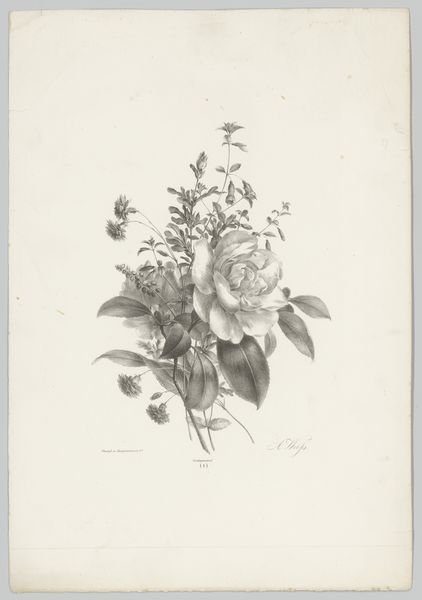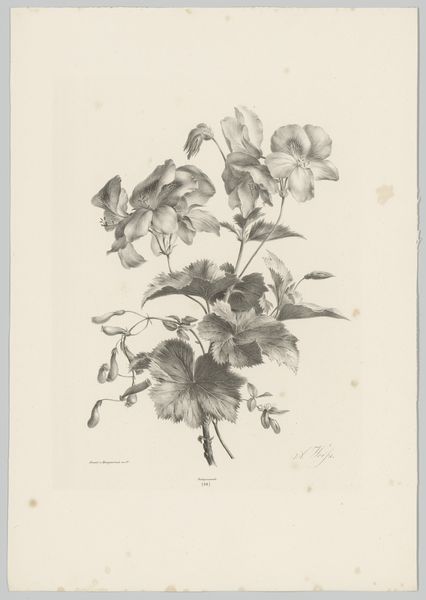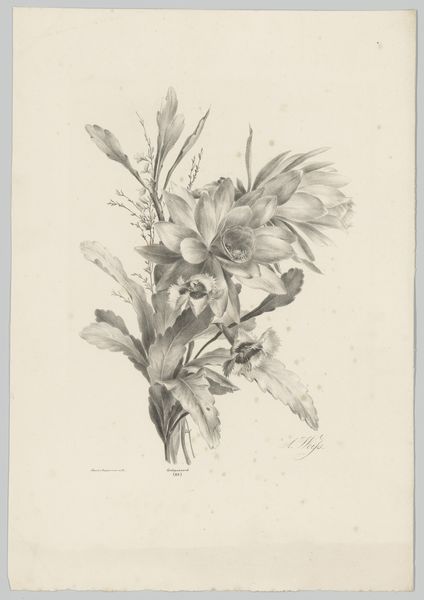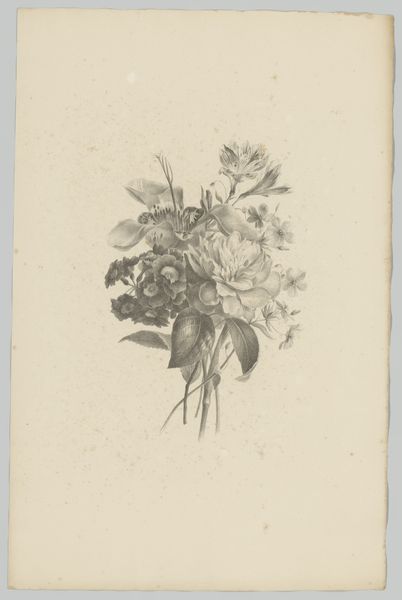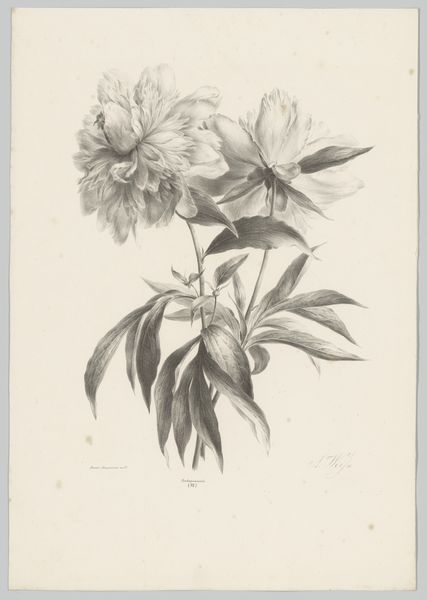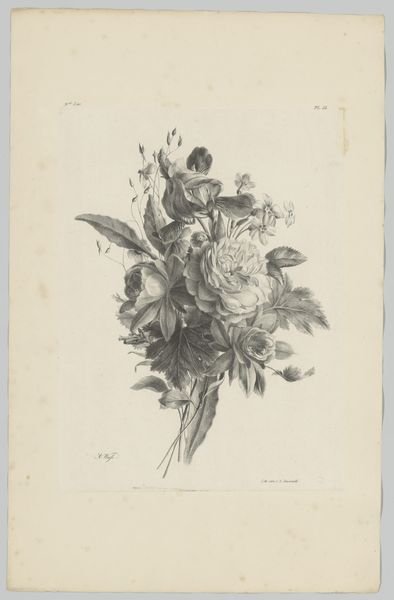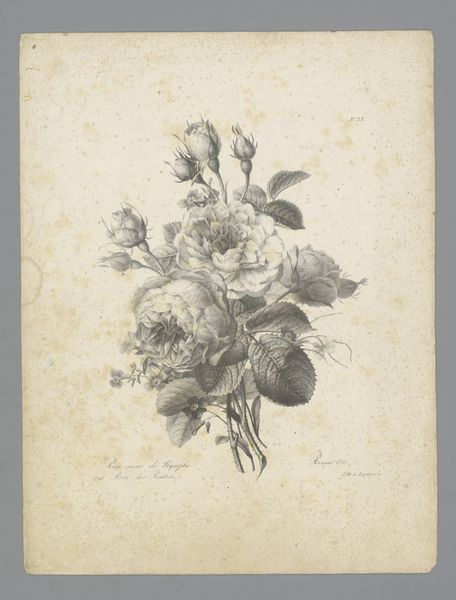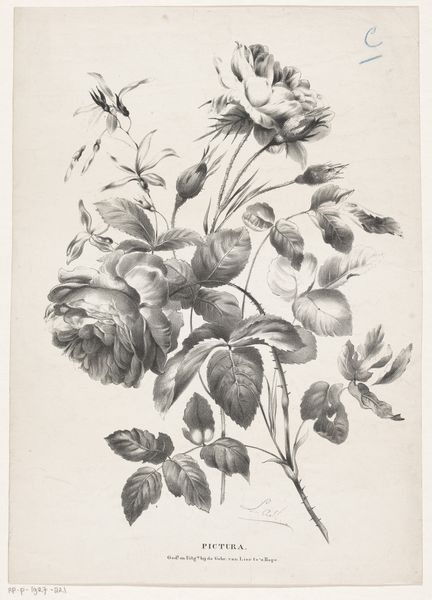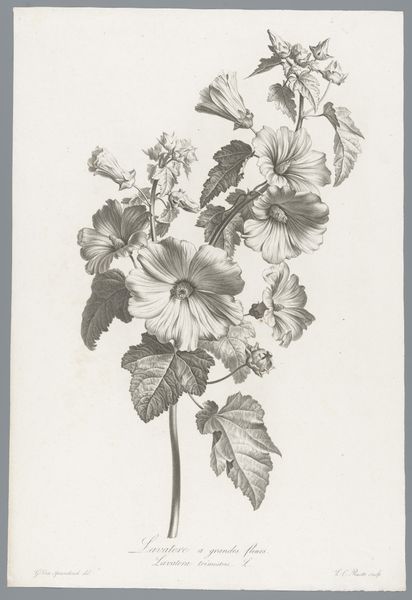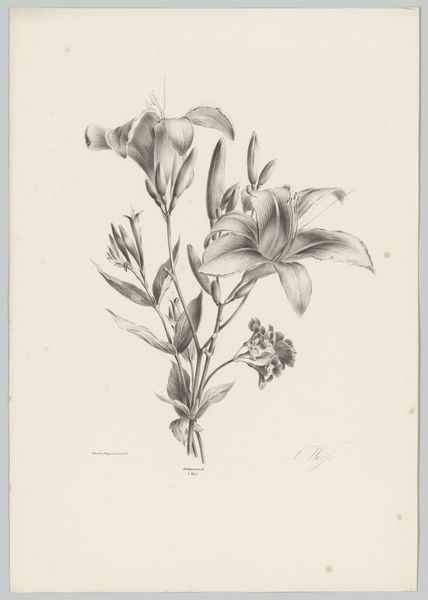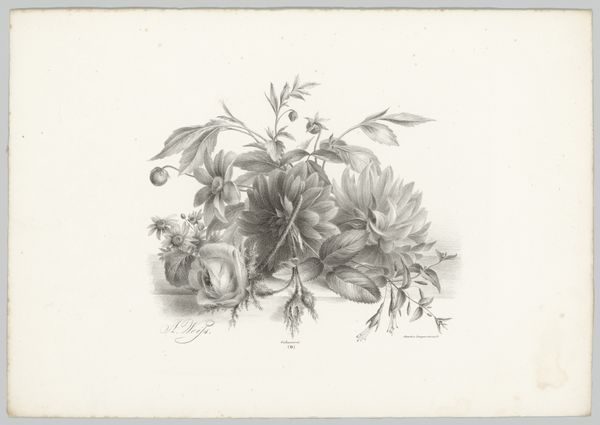
drawing, print
#
drawing
# print
#
botanical illustration
#
realism
Dimensions: height 430 mm, width 302 mm
Copyright: Rijks Museum: Open Domain
Curator: My initial impression is that this artwork emanates a sense of quietude and classical restraint. Editor: Precisely, what captures my eye first is the delicate, almost photorealistic rendering of these flowers. The artist clearly possessed masterful command over line and shadow. Let me introduce "Roos en anjerachtige bloem," which translates to Rose and Carnation-like Flower. We know it comes to us from 1836, presently residing at the Rijksmuseum. Curator: Its location within the Rijksmuseum frames this print as a valuable document of both artistic skill and the societal interest in botanical illustration during the 19th century. These weren't simply decorative pieces. They were often scientific records circulated amongst researchers. Editor: Observe the composition. Two blooms dominate, each presented in slightly different states of opening. The rose at the top, more exposed, juxtaposes with the tightly furled form below. What strikes you about the tonality and interplay of light? Curator: The delicate rendering softens the overall feeling. Yet, in contrast with the overt romanticism dominating painting, these botanical works embraced scientific clarity above all else. These images often served the function as encyclopedic catalogs, therefore prioritizing observation accuracy. Editor: Agreed. And within that framework of accurate description, there's something to be said about the inherent beauty the artist discovered in nature's design. The artist utilizes a range of shades to indicate volume and texture, effectively conveying a tactile sensation, one could almost feel the velvety surface. Curator: Absolutely, although realism flourished as a movement later in the 19th century, artworks like this contributed greatly to its ascendance by prioritizing accuracy over stylized grandeur, even the plant's stem angles towards the viewer, leading their focus naturally into the arrangement. This demonstrates its place within historical currents emphasizing verifiable experience. Editor: Such thoughtful details reveal much about its beauty beyond subject alone. A deeper engagement discloses delicate structures interwoven skillfully onto otherwise plain stock—something well worth appreciating. Curator: Absolutely. This work reflects a specific confluence of art, science, and social context from the era that molded taste at galleries nationwide—one we would like every listener visiting with us today at our collection can gain. Editor: Agreed.
Comments
No comments
Be the first to comment and join the conversation on the ultimate creative platform.
